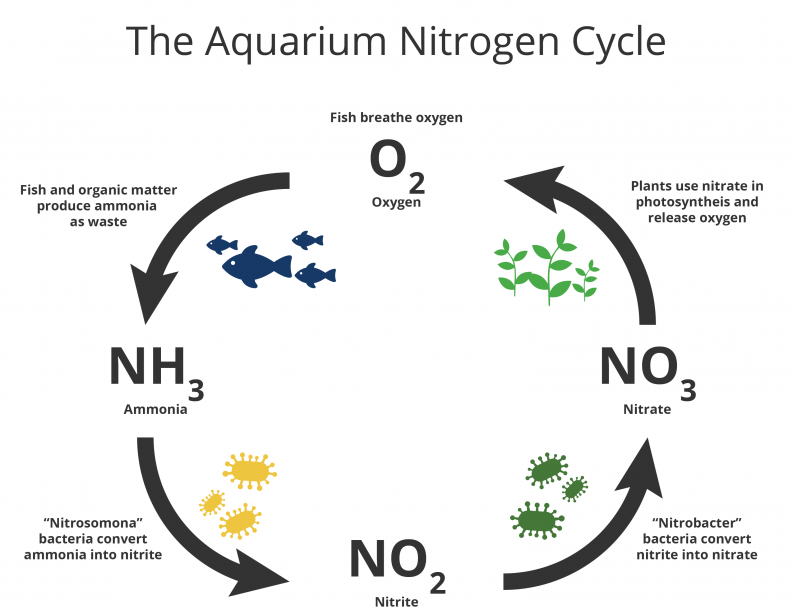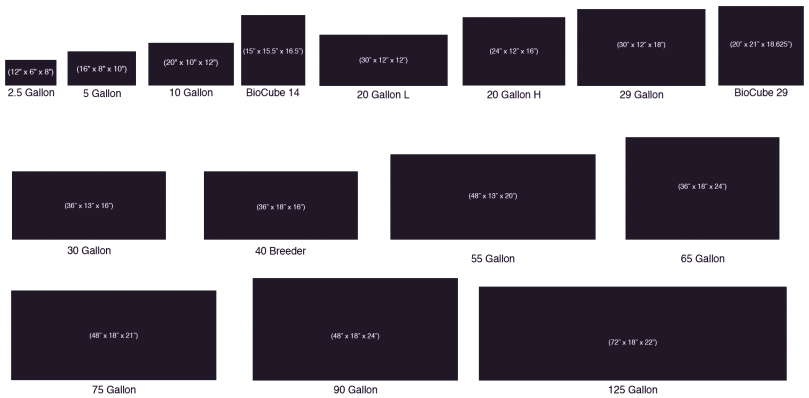This guide aims to describe the fundamentals of dealing with freshwater aquariums and, also, to serve as a hub for interested all over the internet to ask questions or share knowledge. The comment section at the bottom is available for anyone to leave a message and doesn't require any sign in process to be used.
Ecosystem
Inside an aquarium there is a small ecosystem composed of several organisms and chemical cycles. The most important chemical cycle is the nitrogen one. Basically, it consists of fish waste being consumed as an essential nutrient by bacteria and plants. If unbalanced, fish waste might raise to toxic levels and compromise the aquarium.

Recent deployed aquariums do not have enough bacteria to quickly remove the waste from the water. Therefore, special care must be taken to fully cycle such aquariums.
Sizes
There are several different aquarium dimensions and volumes, the most common are (click to enlarge):

Public aquariums less than 100 gallons are usually considered small, while for home aquariums the term usually describes tanks smaller than 20 gallons. Besides this, there is not much consensus of a standard nomenclature. Therefore, the following nomenclature for home aquariums is proposed:
| Tank Size | Gallons | Characteristics |
|---|---|---|
| large | > 20 | Requires large pumps and filters, reinforced structure to support the heavy weight, coolers and heatsink for illumination, and special care during maintenance (ex: arm extension and small ladder). |
| small | < 20 | Compared to large tanks, doesn't require reinforced structure (ie: standard furniture can handled it), nor ventilation care, nor arm extension, nor ladder. |
| nano | < 3 | Light enough so one single person can raise it without much effort. |
| desktop | < 1/2 | Doesn't require filter or illumination (ie: there are no electrical cables to mess a home desk). |
Inhabitants
Usual aquariums inhabitants are: fishes, shrimps (invertebrates), and plants. Each one with its own characteristics:
- Fishes: must be regularly fed with food flakes and requires regularly water changes.
- Shrimps: requires less care than fishes since they also enjoy eating other food sources that occur naturally in a planted tank (ex: algae and dead matter).
- Plants: requires some attention to fine tune some parameters (ex: illumination, fertilizer, ...). However, once healthy, it is possible to reduce the amount of water changes.

Comments